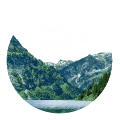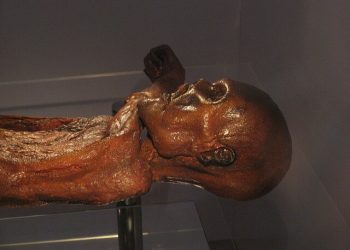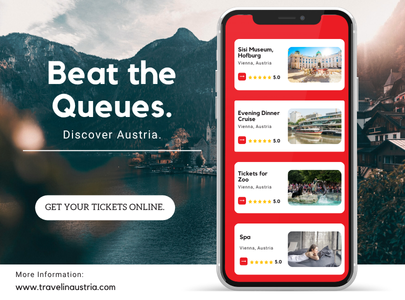The city of Kufstein is the second largest in the Tyrol region, after the regional capital, Innsbruck. The Kufstein Fortress is, of course, the main attraction in the city, but the old town center is also impressive and pleasant to visit. In the city center, you can see the old town hall, the Gothic church, and the beautiful city gardens. Near the river that runs through the heart of the city, there are ancient remains of the medieval city walls that have been impressively preserved.
The Story of Kufstein Fortress
The fortress is first mentioned in writings from 1205 AD. At that time, it was under the control of the Bavarian Duke Ludwig and the Bishop of Regensburg.
The fortress served as a fortified defense point between Bavaria and Tyrol and played an important role in the regional wars of the Middle Ages.
In the 14th century, the fortress came under the ownership of the Tyrol region after it was given as a gift to Duchess Margarete on the occasion of her marriage to the son of the ruler of Bavaria. About 20 years later, the duchess decided to transfer control of the fortress to the House of Habsburg, which angered the rulers of Bavaria, and they conquered the castle back.
In the 16th century, a great battle took place over the fortress, at the end of which it was conquered by the Austrian Emperor Maximilian I.
The battles for control of the fortress continued in the following years, and only in 1814, after the Congress of Vienna, did the castle return to Austrian hands, where it has remained to this day.
Due to its strength and fortification, the fortress served as a prison for political prisoners during the Austro-Hungarian Empire.
Since 1924, the fortress has been owned by the city of Kufstein and houses a city museum and a concert hall.
This is what Kufstein Fortress looks like:
The Museum in the Fortress
Inside the ancient building, there are four exhibitions related to the important events that took place in the fortress and its surroundings throughout history.
Exhibition 1 – The Fortress Tower and the Heroes’ Organ
In the tower of the fortress (in German: Bürgerturm), collections from the fortress area are displayed from the time it was under the military rule of the Austro-Hungarian army troops in Tyrol (called Kaiserjäger in German).
In addition, this exhibition features the largest open-air organ in the world – the Heroes’ Organ. The giant organ, installed in the fortress in 1931, includes 4,948 pipes, and its powerful sounds can be heard clearly to the edge of Kufstein. Every day at noon, there is a short organ performance (in summer, there is also a performance at 6:00 PM).
Exhibition 2 – Emperor Maximilian I / Artillery Laboratorium
The history of the fortress is strongly linked to Emperor Maximilian I, who returned it to Austrian hands in 1504 after a prolonged siege and battle. After its capture, the emperor turned it into an even more fortified stronghold. This exhibition presents the events of that period in great detail and provides a deep insight into the fierce battles that took place at the fortress.
Exhibition 3 – Punishment in the Middle Ages
Punishment during the Middle Ages was particularly cruel, and those sentenced suffered severe torture in public view. In this exhibition, you can learn about the ancient justice system, from the verdict to the execution of the sentences.
Exhibition 4 – The Fortress Prison
During the Austro-Hungarian Empire, the upper floor of the Emperor’s Tower (Kaiserturm) served as a prison for political prisoners. Important and influential people in the empire who were not looked upon favorably by the rulers were imprisoned here. You can visit the cells of the ancient prison and see the living conditions of the prisoners.
Guided Tours of the Fortress
If you wish, you can join a guided tour of the fortress led by professional local guides. Out of season, you must book a tour in advance, but during the summer, there is a tour every day.
- Tour time (summer only): Fridays, Saturdays, Sundays, and holidays at 12:30 PM.
- Duration: About one hour.
- Meeting point: Schlossrondell / Panoramabahn – the upper station of the funicular.
- Cost: €4 per person in addition to the fortress entrance fee. Payment is made in cash to the guide.
Book a tour for the winter season
Essential Information for Your Visit
Opening Hours:
- Winter season (November 3 to March 27): Daily from 10:00 AM to 5:00 PM. Last entry at 4:00 PM.
- Summer season (April 12 to November 2): Daily from 10:00 AM to 6:00 PM. Last entry at 5:00 PM.
Cost:
Winter Season:
- Adult: €13.50
- Student: €7.50
- Family (2 parents and children): €28.50. Each additional child (up to 4 children) – €1.50.
- Children up to age 5: Free.
Summer Season:
- Adult: €14.50
- Student: €8.50
- Family (2 parents and 1 child): €30.50. Each additional child (up to 4 children) – €1.50.
- Children up to age 5: Free.
You can download a free audio guide to your phone to enrich your visit to the fortress.
Official Website of Kufstein Fortress
Address: Festung 2, 6330 Kufstein
How to get there:
You can ascend to the fortress from the city of Kufstein using the funicular named after Emperor Maximilian (in German: Panoramabahn Kaiser Maximilian). The funicular station is located right in the old town of Kufstein.
Map:
Other Attractions in the Area
After visiting the castle and the lovely city of Kufstein, you can continue south towards the wonderful Ziller Valley and the town of Mayrhofen. The valley is about a 40-minute drive from Kufstein. Alternatively, you can continue to the capital of Tyrol – Innsbruck – and wander through its beautiful old town center. Innsbruck is about a 55-minute drive from the fortress.
If you are traveling with children, you can go to the Hexenwasser (Witch’s Water) adventure park, which is a half-hour drive away.
Another option is to drive about 40 minutes to the wonderful Lake Achen. It is a picturesque and impressive lake with great nature activities. We have prepared a detailed article about the lake and its surroundings.


















